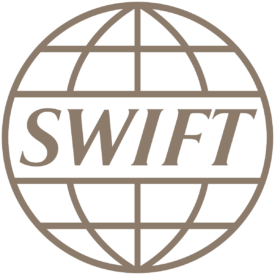SWIFT Fees

Ever wondered how banks communicate with each other, especially when they operate in different countries?
How do they know where money has been transferred from, where it is going to and how it gets there?
Welcome to SWIFT - responsible for around 80% of all international transfers and, of course, it does not come free of charge.
An introduction to the SWIFT system

SWIFT is an acronym for the Society for Worldwide Interbank Financial Telecommunication.
If we go back in history, banks used to communicate across borders with each other by means of telex messages.
Telex messages were paper based messages, extremely slow and had no set formatting standards - so could not be automated, and didn’t offer the level of security needed.
There was an obvious need for a more automated interbank communication system that could be paperless and was more secure.
So in 1973 a group of banks got together and started to develop a new system for communicating internationally between each other. This new system was called SWIFT, and 3 years later it started to operate out of its headquarters in Brussels.
It is, in short, the method with which banks communicate with each other on an international basis. Let's call these FIN messages (financial messages).
SWIFT does not actually transfer your money (that is the banks themselves) but supplies a communication system that is a collective string of codes to detail where a transfer is coming from, where it’s going, and how it will get there.
As such, the collective code comprises of an institution code, a country code, a location code, and a branch code.
Fast forward to today and more than 11,000 institutions in more than 200 countries are connected to SWIFT.
The role of banks in transferring your money internationally

Banks are the ‘holders’ of money and as such, no matter who you are transferring your money through, be it an FX broker or even an online platform, banks are therefore involved in the transfer process in the vast majority of international transfers.
As an example, you as an individual can transfer money directly through your bank, but this is usually a costly exercise. By using an FX broker, an intermediary between yourself and the bank, you can benefit from the intermediary's ability to ‘bulk buy’.
In other words, the FX broker will have negotiated with a bank(s) for certain rates based on its bulk buying power, and will in turn pass some of these savings on to you.
So even though you are dealing directly with the FX broker, it is still the bank that actually conducts the physical transfer of your money internationally.
As the money is leaving one bank and arriving at another, it is most likely you who will incur a SWIFT fee or even two.
Typical SWIFT Fees

As said at the start of this article, SWIFT is not a free service and therefore costs are incurred.
SWIFT charges the banks certain fees and the charging goes something along the lines of this:
‘SWIFT is a cooperative society owned by its members. Members are categorized into classes based on share ownership. All members pay a one-time joining fee plus annual support charges which vary by member classes. SWIFT also charges users for each message based on message type and length. These charges also vary depending upon the bank’s usage volume – different charge tiers exist for banks that generate different volumes of messages.”
In other words, we don’t know exactly what a bank gets charged by SWIFT and they are not about to divulge that information to you, the client. However, we can tell you from our own experience that it is usually around Euro 25 and USD 20 for an average transfer.
How the bank recovers SWIFT fees

Of course the banks don’t simply absorb these SWIFT fees, they pass them on to their clients. In the situation where you are sending money internationally, that means you will be charged by the bank.
Of course (yes, again) they could see this as an opportunity to make a profit. In other words, they pay SWIFT one fee and charge you another higher fee. This can occur both when sending the money from your bank as well as to the bank receiving the foreign currency you have bought.
We have seen one case where the client was charged some 600 Euro as a ‘SWIFT’ fee which historically should have been around Euro 25. The client did complain and it was subsequently reduced dramatically.
In summary, SWIFT fees are something you have to be very careful of, as they could seriously impact the amount of fees you pay on a money transfer.
It must be worth noting that SWIFT fees represent only one of the many costs you face when transferring money internationally. Learn more here about other hidden fees that you need to aware of.
Can you avoid SWIFT fees?

The money transfer business is changing, and the impact of FinTech is presenting you with more and more choices as to how you transfer your money internationally and more importantly, bringing down costs and making them much more transparent for you.
Find out more about how Incompass can help you with transparent charging and avoiding SWIFT fees for your Eurozone and USA collections.







